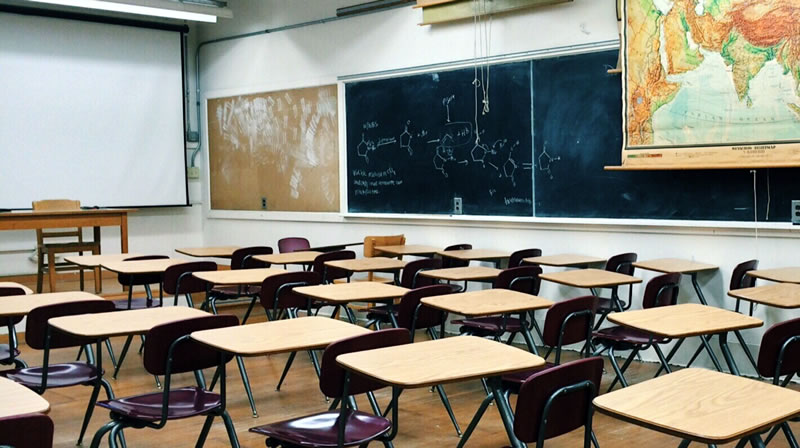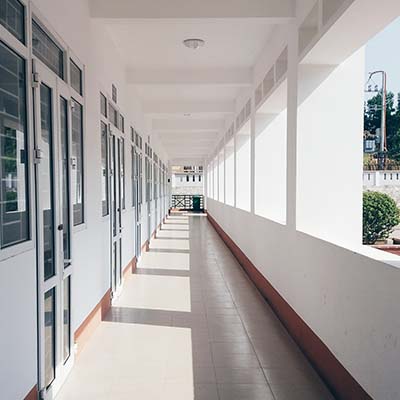
Located in India’s state of Haryana, the Department of School Education is a body of the Haryana government that is responsible for school education in the state of Haryana.
The department is in charge of hiring and retaining school teachers for the Government of Haryana’s public elementary and secondary schools (government schools). It also oversees the Haryana Board of School Education, which is responsible for administering the school leaving examinations.
Status of School education in Haryana
As of January 2019, 55.3 percent of students residing in rural Haryana were enrolled in private schools compared to 55.8 percent in 2016, 6.8 percent of 15-16-year-old females, according to the 2018 Annual Survey of Education Report (ASER).
2.3 percent boys in the 11-14 age group were not enrolled in any school in the rural areas of the state, 58 percent children from Classes 3 to 5 were able to read the Class 2-level text, 84 percent in the 11-14 age group were not in the state.
There were 15,998 government schools with elementary divisions, according to the Department of Education. While elementary schools accounted for 9,177 of the totals, upper primary schools accounted for 6,821, representing an increase of about 13.6 percent in the number of higher primary schools over the previous year.
Primary and Secondary Education Status in Haryana
The school education system in Haryana does not trail behind those of the other Indian states in terms of quality. Pre-primary, primary, secondary, higher-secondary, and degree education are all accessible in this state, as is vocational training. In Haryana, educational opportunities are provided to both public and private schools. Approximately 8,883 primary schools, 2,394 middle schools, 3,483 secondary schools (high-382, secondary-1,829) 7,060 high/secondary schools are operated by the government in Haryana.
Pre-primary, primary, secondary, higher-secondary, and degree education are all accessible in this state, as is vocational training. In Haryana, educational opportunities are provided to both public and private schools. Approximately 8,883 primary schools, 2,394 middle schools, 3,483 secondary schools (high-382, secondary-1,829) 7,060 high/secondary schools are operated by the government in Haryana.
The Education Department of the State Government, which is referred to as the Haryana Education Board, is in charge of administering the government schools. The Central Board of Secondary Education is the governing body for the majority of private schools in the country (CBSE).
Haryana’s Higher Secondary Schooling Opportunities
The State Government’s primary concern has been to elevate Haryana to the status of a premier educational destination. The major goal of the state government is to ensure that everyone has access to high-quality, need-based education. The education situation in the state is at a critical juncture right now. It is the goal of the higher education sector in Haryana to adapt to the rapid changes that are occurring throughout the world.
Because to the state’s welfare-oriented incentive programmes, which include extensive financial support, the Gross Enrolment Ratio (GER) of students enrolled in higher education institutions in Haryana is 28.7 percent, as opposed to the national average of 19.40 percent.
Haryana Board of School Education (HBSE)
The Board of School Education for the state of Haryana was created in Chandigarh in 1969. A public examination at the middle, matriculation, and senior secondary (academic and vocational) levels is conducted twice a year in the state of Haryana by the Haryana Board of Education, which is connected with a number of institutions. The board began operations with a staff of 100 officers drawn from the Punjab University campus in Chandigarh, who were assigned to the board.
In the year 1970, the board held its first test at the matriculation level. The board began administering middle examinations in 1976, marking the first time the practise was used (Class 8th). The board of directors was relocated to Bhiwani in the year 1981.
A year later, the board founded the Haryana Open School in order to broaden its horizons. From the 2006-2007 school year onward, the board has adopted the semester system. It is the first school board in India to do so, as well as the first to implement relative grading and Continuous and Comprehensive Evaluation (CCE) across all board classes, namely middle, secondary, and senior secondary, as well as across all board disciplines.
State Council of Educational Research and Training
It was founded in the month of April 1979. In order to bring new aspects to school instruction, the State Institute of Education and the State Institute of Science came together. The Haryana Education Department is committed to raising the educational standards of teachers in order to achieve a qualitative increase in the overall quality of education at all levels of schooling.
It is in honour of this effort that SCERT, via its eight separate divisions, is able to meet all of the demands and expectations in the field of educational administration.
The council places the greatest emphasis on preserving quality in teaching, both as a goal in and of itself and as a source of inspiration for those who wish to preserve excellence in research. The institution’s goal is to familiarise instructors with the latest developments in the field of school education through ongoing training sessions, workshops, and other initiatives.
Popular Schemes of The Education Government of Haryana
1. Mukhya Mantri Shiksha Deeksha Yojana
Mukhya Mantri Shiksha Deeksha Yojana, a plan based on the principle of activity-oriented learning, was inaugurated in all government schools in Haryana on February 5, 2014. The scheme is being implemented by the state government in all government schools. The objective of this programme is to improve the standard government education by introducing a qualitative shift.
2. Shiksha Pariyojana Parishad
It is the primary responsibility of the Haryana School Shiksha Pariyojana Parishad to carry out the Sarva Shiksha Abhiyan (SSA) and the Rashtriya Madhyamik Shiksha Abhiyan (RMSA) in the state of Haryana. It is a registered society under the jurisdiction of the Haryana Government Department.
3. Introduction to Computer Education Programming
This is a ‘wholly state-funded initiative,’ and it has been in operation since the 2010-11 academic year for a period of five years. Students will get computer instruction through this programme, which will be implemented at about 213 Govt. Senior Schools around the state.
4. Sarva Shiksha Abhiyan
It is the Government of India’s flagship programme for achieving Universal Elementary Education (UEE) in a time-bound manner, as mandated by the 86th Amendment to the Indian Constitution, which declares free and compulsory education for children aged 6 to 14 years a Fundamental Right for all children in the country.
SSA is being implemented in conjunction with the Central and State Governments, with a 65:35 share of the total cost being shared by the two governments. Under this initiative, all pupils in government schools from first to eighth grade have received free text books and workbooks, as well as financial assistance for stationery, school bags, and school uniforms.
5. Rashtriya Madhyamik Shiksha Abhiyan
This initiative, which was established in March 2009 with the goal of increasing access to secondary education while also improving its quality, has been in operation since 2009-2010, with the implementation phase beginning in 2009-2010.
It is anticipated that by establishing a secondary school at an acceptable distance of any habitation, an enrolment rate of 75 percent will be achieved at secondary level, up from 52.26 percent in 2005-2006.
Others include improving the quality of education imparted at secondary level by ensuring that all secondary schools comply with prescribed standards, removing gender, socio-economic, and disability barriers, ensuring universal access to secondary level education by 2017, i.e., by the end of the 12th Five Year Plan, and ensuring universal retention by 2020.
Girls Education in Haryana
The literacy rate among females is of particular significance to the government of Haryana. The state of Haryana provides concessions and incentives to females, particularly those from backward/EWS and Schedule Caste communities, among other things.
Free uniforms are being offered to girls from Scheduled Castes/EWS families in elementary, middle, and high school classrooms. For students from Scheduled Castes/EWS, grants are offered to cover the cost of books and stationery products, as well as scholarships and tuition price reimbursement. Education is provided at no cost to female candidates up to the level of a bachelor’s degree.